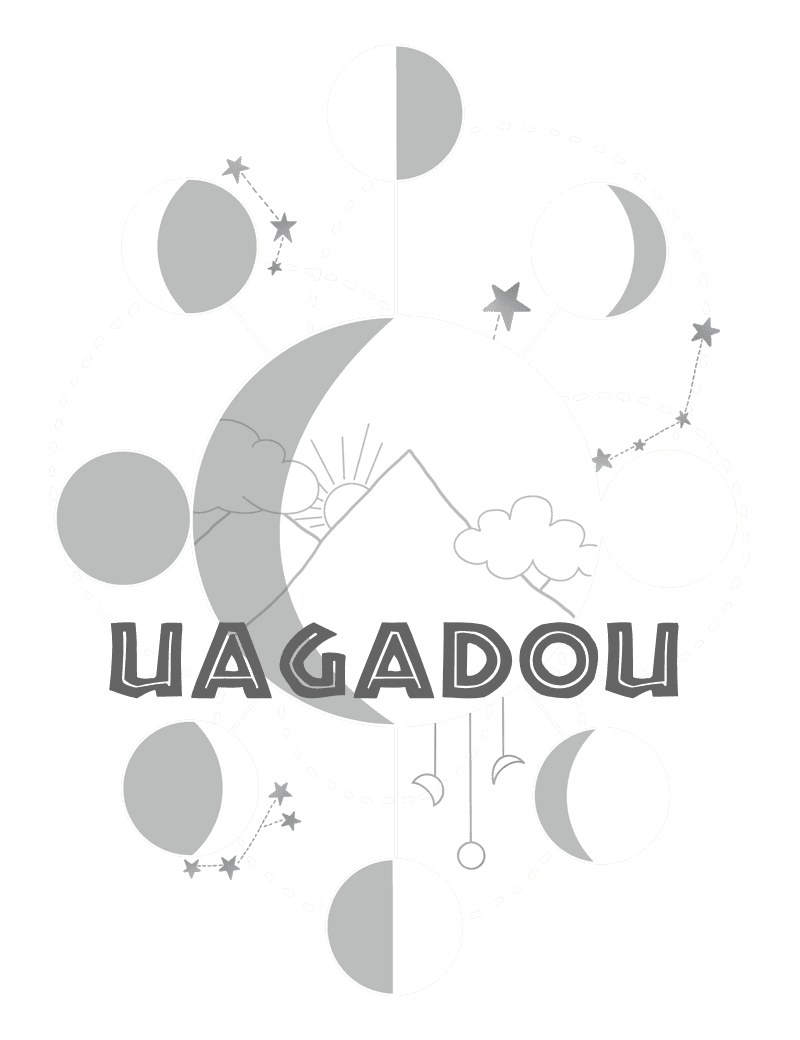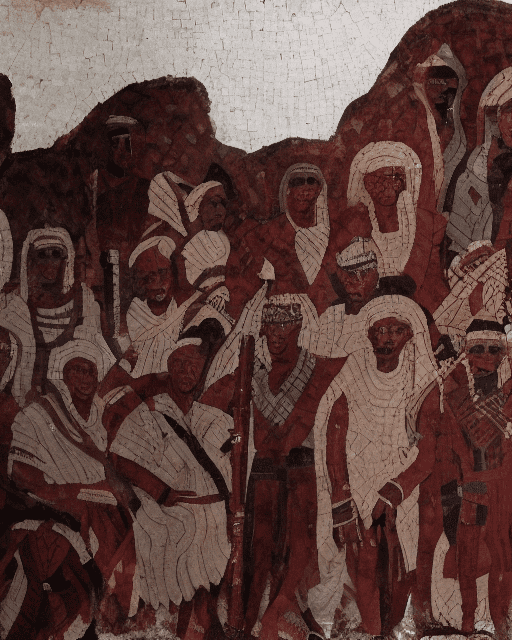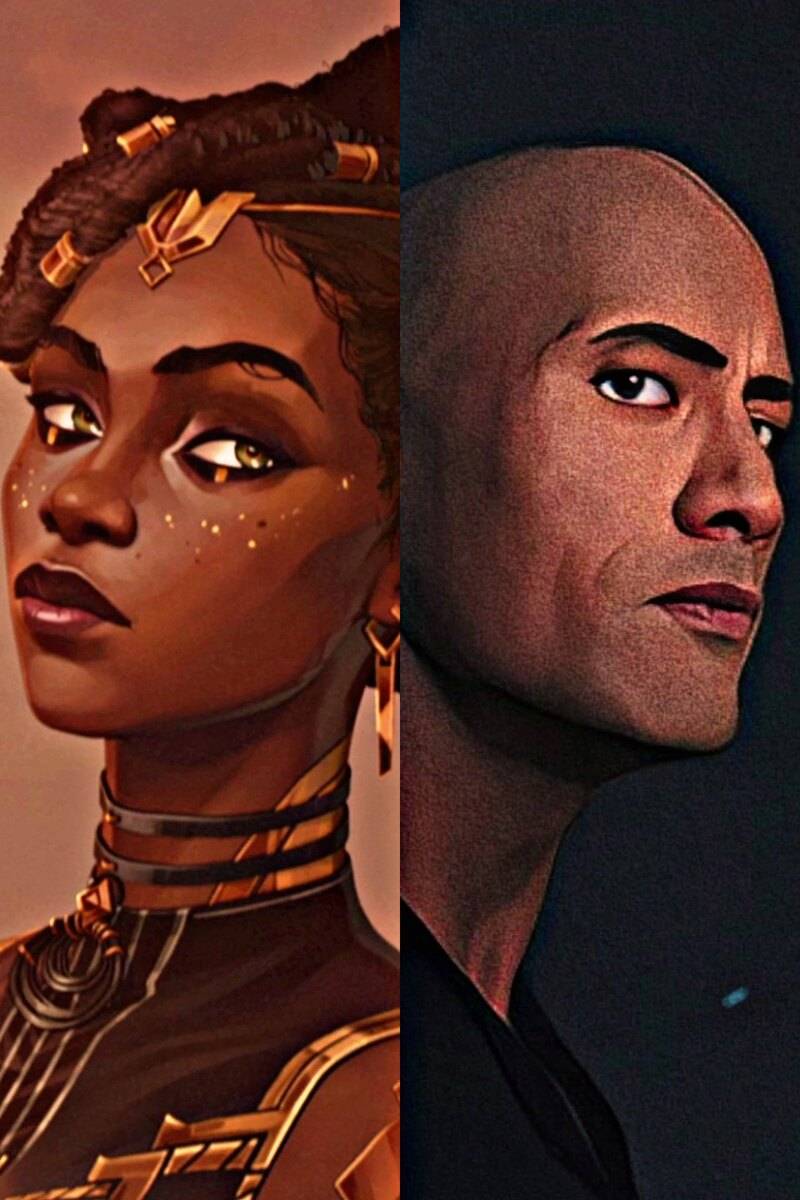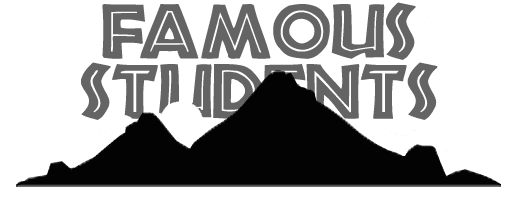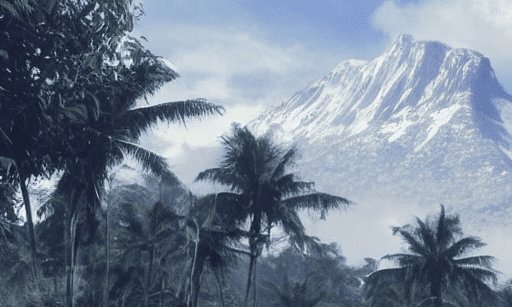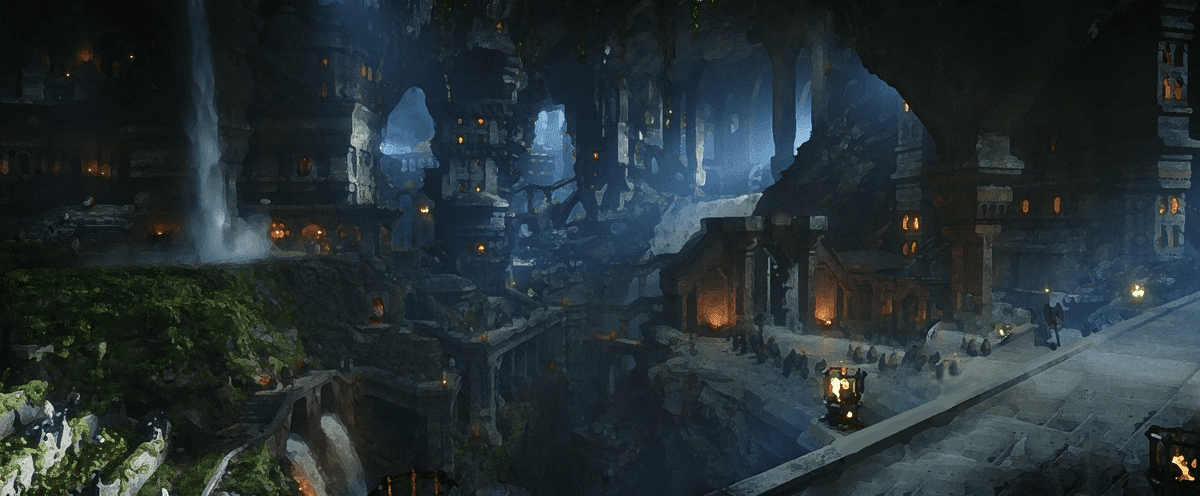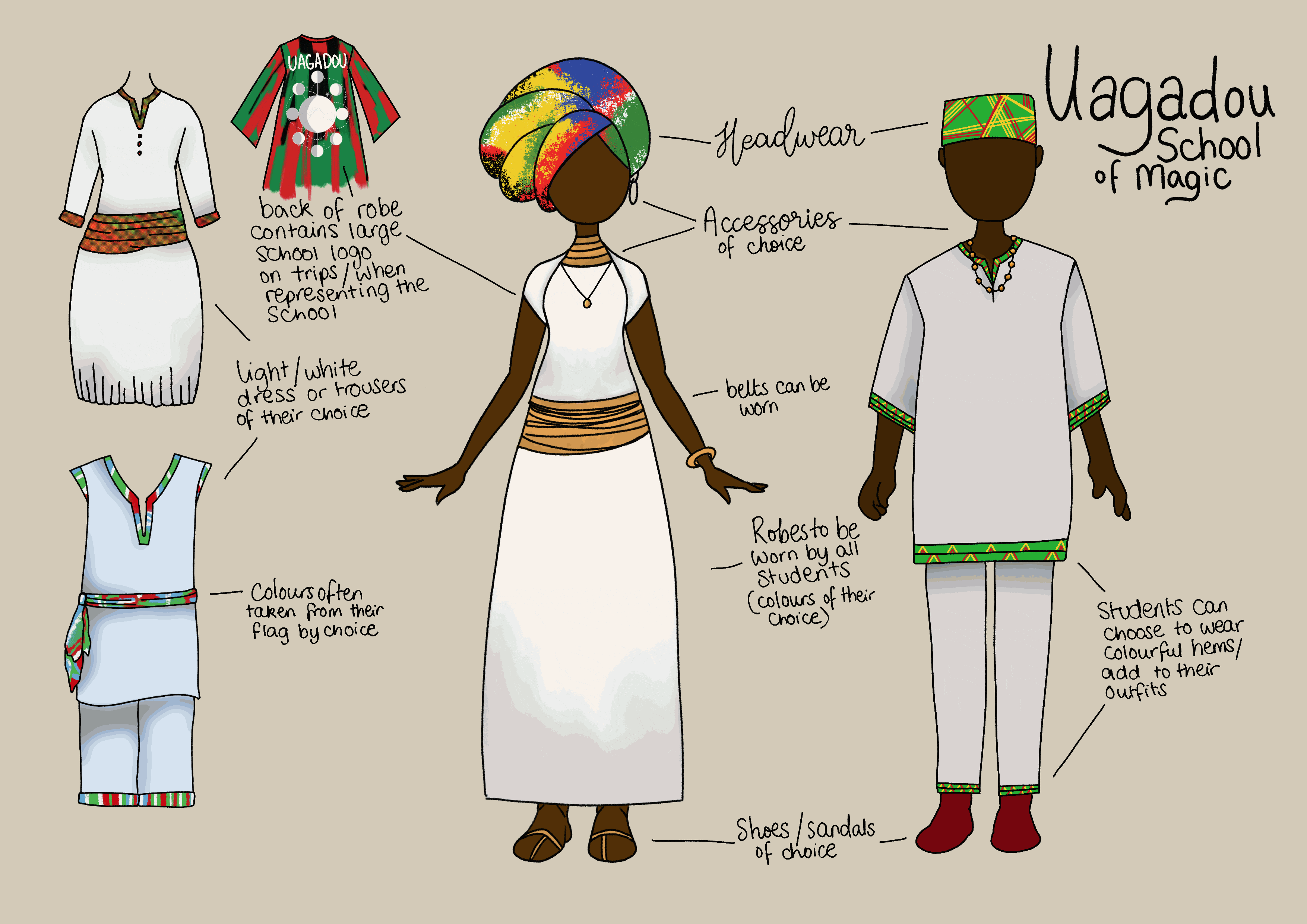Uagadou
.......................................
.....................
.............
............................................................
.............
.............................
..........................................................
......
............................................................
.............
............................................................
.............
.............................
............................................................
.............
............................................................
.............
.............................
...........................................................
............................................................
....
............................................................
........
............................................................
.............
............................................................
.............
.............................
............................................................
.............
.............................
............................................................
............
............................................................
...........
............................................................
......
............................................................
.............
.............................................................
............
............................................................
............
............................................................
.............
............................................................
.............
.............................................................
..............
..............................................................
.............
..............................................................
........
............................................................
.............
............................................................
.............
.............................
.........................
.............................................................
............................................................
........
............................................................
............
............................................................
...........
.......
.............................................................
.......
..............................................................
..........
.............................................................
..........
.............................................................
.....
Dates of birth and death: Somewhere in the 8th Century
Nationality: Unknown
Blood status: Unknown
The exact names and origins of the founders of Uagadou have been lost in time. Some claim one person led the initiative, whilst others claim it was a group. Even the Council of the Wise – the current governing body of the school - differ in their beliefs as to its origin. What is agreed on, however, is that the idea of a school was first started by a mountain tribe in the distant past. They have been referred to by many names over the past thousand years. But for many centuries now, they have called themselves the Uagadou Tribe. It officially became the Uagadou School of Magic in the eighth century, but the tribe taught wizards and witches even earlier.
The Uagadou Tribe’s origins and identity are shrouded in more mist than that surrounds the school. They resided in one of the mountains of Africa. Some speculate it was on the same ground and mountain that the founders built this school, others say they moved throughout the country over generations.
Loyal to the founder's teachings, the tribe has practised an incredible amount of humility. Their name, the location in which they resided and the identity of each member - or even the heads of the tribe - are unimportant to the existence of the school. What matters most to them are their ethics and beliefs that have driven the school for centuries. It is believed that the tribe was around three thousand years ago, at the least. However, the school was officially founded in the eighth century.
What little is known about the founders points out that they had a strong connection to the Moon and the Sky. They also held dreams in the highest regard. An importance traced back to their usage of dreams in communicating with their future students. Their link to nature and animals was recognised by them. It is rumoured that every individual of the tribe was all capable of self-transfiguration and that several members were also highly proficient seers that envisioned the school as it is now, in all its glory.
During the school’s acceptance process, which includes a dream messenger, people often see an unknown small girl. Many members of the tribe believe her to be a direct descendant of a founder. Whilst her attire changes over the centuries, she has never been described by anyone as older than ten, hinting at an untimely death........................................
.........................
..........................................................
............................................................
.............
.............................................................
............
............................................................
............
............................................................
.............
............................................................
.............
.............................................................
..............
..............................................................
.............
..............................................................
........
.........................
.............................................................
...
...........................................................
.............................................................
...
.............................................................
.......
.............................................................
.......
..............................................................
..........
.............................................................
..........
.............................................................
.....
..........................
..........................................................
......
...........................................................
............................................................
....
............................................................
...........
............................................................
......
............................................................
.............
.............................................................
............
............................................................
............
............................................................
.............
............................................................
.....
Age: 40
Nationality: Congolese
Blood status: Half-blood
Name: Moses Passaris
Age: 66
Nationality: Ugandan
Blood status: Pureblood
Due to its size and the complexity of the role, there are always two heads of the school and through co-operation, they simultaneously handle the entire administration of the school. As such, the chosen pair require the ability to work incredibly well together and often, if one steps down, the other will too. As such, most former heads join the council of the wise for five years at least to guide the new pair. After this time, they must be voted in by the council through an unanimous vote to join permanently, if they choose to do so.
Moses and Omolara shared a deep bond through the latter's father. Thabo Osoba was previously elected as headmaster alongside his old time friend, Moses. But after a brutal animal attack, his position was left vacant. Omolara rose up to honour her father's name and presented herself as a candidate. After some debate and a vote of confidence from Moses himself, the Council of the Wise agreed to let her serve as headmistress alongside her father's friend.
Moses was the son of two wizards that tended one of the farms on Uagadou's premises. While he descended from immigrants through his father's bloodline, his mother claimed her family had tended these lands for generations. Tracing all the way back to Uagadou's foundation. Ultimately, none of this was proven, but it did offer her son Moses firmer ground to stand on as he rose through Uagadou's community. He has travelled a lot in his time beyond the school, which has given him a broader perspective on what can be good for the school.
As his counterpart, serves Omolara. More than twenty years younger than her colleague, she believes Uagadou's schooling system has become outdated. While they make do with the many teachers joining them from across the continent, Omolara believes their luck will one day run dry. Efficiency is key, and while the students' freedom and sense of community is important, she thinks they are beginning to lack discipline. People's sense of duty is waning under the easy years of peace and quiet the school has known more recently.
With a difference as clear as night and day, the two headmasters still respect one another's views and truly believe both their actions are necessary to make Uagadou survive the tides of time.
Babajide Akingbade [Former Supreme Mugwump]
Karaba ["Evil" Sorceress from West Africa, cursed by a poisoned thorn in her back]
Joshua Sankara [Seeker for Burkinabé National Quidditch team, World Cup champions 2006. Burkinabé Ministry of Magic Minister for 2 days before quitting]
Zawadi Baadaye [Famous seer]
Uagadou School of Magic was founded in the eighth century by what is now known as the Uagadou Tribe. No individual member was ever credited for the school’s creation, believing that the roots of the principles and ethics that the school followed should be attributed to the tribe as a whole.
They have gone by many names over the centuries but as the original was lost in time, it was decided that the ‘Uagadou Tribe’ was the simplest option – though no one knows if the school was originally named after the tribe anyway or if the tribe is now named after the school. Some believe that the tribe’s original name had an association to dreams, the sky, the mountains or the moon – all of which are fundamental parts of the school and how it is governed.
As such, the history of Uagadou is full of legends and stories - all from its origins to its beliefs. These are often associated with creatures, such as the Legend of the Tebo. It is believed that this is because the tribe had a spiritual connection with nature and animals, each of them known to be a skilled shapeshifter. These shapeshifters were able to transform themselves into a single animal at will. It was later recognised that they were animagi. Students grow up with these stories, often debating the ones they believe in strongly but whether they are simply legends or fact has been lost in time. What is evident is that they all hold meaning to the school.
Each individual that passes through the school, whether as a student or teacher – though most teachers were usually alumni – are welcomed into the tribe and seen as a part of it, defining what it means to be from Uagadou and how the school – and its reputation - carries itself in the future.
The school was founded deep into the mountains, high up into the skies that it was shrouded in mist and mystery. Its location is simply as mysterious as its background.
Since this time, it has grown to be one of the largest schools, accepting students from all over Africa. Due to this, there are many languages spoken at Uagadou. However, as the school itself is located and considered a Ugandan school, classes are taught in Swahili - which is also used in several other countries. It is one of the most spoken languages in the continent. During the first three years, there are additional supplement language classes in Swahili for those who require it. However, there are teachers and mentors proficient in many African languages, as well as those brought to the continent from Europe, to cover any students that struggle in Swahili. For the past two hundred years, English was also introduced as a supplement class.
Following the successful addition of the wands around two centuries prior, the school has adapted and evolved to allow students a more international experience even more in the last century. As such, Uagadou created a modern logo with symbols that were of importance to them and what the wizarding world associated the school with, introduced more broom sports such as Quidditch and Broom Racing and started using wands. Events started to occur.
For the founding tribe, one of the most important beliefs that they held was the importance of dreams. For them, every child should have the opportunity to follow their dreams. They strongly believed in having aspirations, no matter how ridiculous they might seem to others around them. It was for this reason that they recruited their first students to the school through the use of Dream Messengers.
On the 1st January every year, every ten year old witch or wizard in the continent receives their Dream Messenger with a notification of their selection to start in the coming academic year. This method of notification is unique to Uagadou.
As there are many small wizardry schools in the area, students now have to 'accept' their offer within that calendar year in order to formalise their offer.
The Dream Messenger itself is sent by the current headmaster or headmistress of the school, appearing in the new year to the children as they sleep. A token - also called the "dream token" - is left in their dominant hand, which they find on waking. The dream token is usually an inscribed stone. The inscription on the stone is often related to the dream that the child has for the upcoming year, though the message is often vague and the true meaning behind the inscription is not always clear - like dreams usually are. The dream token is capable of changing every year, with a new dream to interpret for the upcoming year, that holds some sort of meaning to the student.
The offer to attend the school is accepted by performing a small ritual. The student - accompanied by at least one guardian - will take the dream token into moonlight. There, they pour a few drops of water onto it, raise it up so the moonlight hits it and mutter the words 'Together, we will follow our dreams' in any language they choose to.LegendsThe Legend of the Tebo
Three thousand years ago, a small tribe discovered something truly incredible. At the age of four, the daughter of the tribe’s leaders started to speak of her dreams - that somehow kept coming true. What she spoke of, always seemed to come to pass: a flood that ruined the harvest, a doctor who blew up the table by mixing the wrong herbs together or a couple falling in love.
For centuries prior, the tribe had been in conflict with their neighbours. Due to their magical abilities, they were powerful enough to defeat their enemies, even when outnumbered. These skills frightened the non-magical community. However, they despised being constantly at war. Instead, they chose to protect themselves. Becoming masters of disguise, the Way of the Tebo was born. Similar to the creature, the tribe learned how to make themselves invisible to the naked eye, specialising in evasion. Like a tebo’s hide, they were strong and learned to protect themselves.
What was truly incredible, however, was the legend of the young girl who was believed to be a skilled seer. It is said that on her tenth birthday, she started to speak in her slumber of a dream that changed the tribe forever. She prophesied a beautiful school where they lived in harmony with many other tribes. Their small tribe had grown to an unimaginable size - speaking of thousands of students from all over Africa. They had created a safe haven, deep within the mountains from which they had originated.
In great depth, she described a vision that brought tears of pride to people’s eyes. She spoke not of a school, but rather a community. For many days and nights, the words flowed from her mouth. It is believed that these were the last words she said, never waking from her slumber. A quarter of the moon cycle later, she fell quiet.
The tribe made its final journey, traversing the lands of Africa until they were deep within a mountain range. They had followed the stars and moonlight, which showed them the way. They sought out wizards and witches like themselves. They aimed to protect and educate them. Families gathered for dinner and the usual chatter daily but one evening, a few children were telling stories. One girl claimed that she had followed a small girl, around her own age, running down a stone path leading into this very mountain. A boy spoke of seeing himself mixing some plants he had never seen until he arrived here together. He said a young girl that he had never seen before handed him some plants to get him started. Another child spoke of how they saw their family, alongside other magical families, all eating dinner just like they were right now.
It quickly became apparent that the ten-year-olds in the group all had a dream on the night that the young seer had stopped talking. Some of them even claimed to see a young girl, matching her description, in their dreams. Like an invisible tebo, the girl’s invisible influence was strong and protective. She became known as the Dream Messenger.The Legend of the Phoenix
Deep within the mountain range lived the original Uagadou tribe. They kept to themselves, never really travelling outside for the mountain provided them with the resources they needed. For years, they were kept safe from danger. It was hard for many to travel there but the tribe were a mountain tribe and traversing these lands was what they knew. One day, another mountain tribe found their way across the range and launched an attack in the middle of the night.
In one night, they almost lost everything. They struggled but they survived and soon, they rebuilt their homes and moved on. A new tribe joined them, seeking refuge in their lands and in exchange, helping to rebuild it. Together, they did just that. The tribe found rare plants in a small jungle they found - a resource that was somewhat scarce on the otherwise icy mountain and word about this mysterious jungle quickly spread. Once again, they were attacked. And once again, they almost lost their home. Yet, they found new friends and rebuilt once more.
Years down the line, word had spread about the tribe. Rumours of a magical farmer who had an infinite supply of food, a doctor who could heal any ailment, the beastmaster who could tame any animal and so on started to spread. Each time the rumours spread, people greedily sought out Uagadou. Yet every time they were engulfed by the flames of their enemies, they would rebuild from it. They avoided fighting and focused solely on the circle of life. With each ‘restart’, a new vision was born. They built a harmonic community. Together, with all of the other magical tribes that sought refuge, Uagadou stood tall and proud. In the flames of destruction, Uagadou grew wings.Wandless Magic
Being an European invention, wands were not used in Uagadou for many centuries. It is only within the recent century where the use of wands has been introduced into the school. It was found that they are an useful tool that allow for easier casting and as such, students acquire a wand before attending school to assist with their learning. Students are taught the wand movements, even when casting wandlessly, to help make the process of learning easier on them. As they get more practice, they become more efficient in casting. Those who struggle to cast often find it much easier to stay away from wandless magic throughout their education. However, Uagadou is committed to encouraging those capable to cast wandlessly.Subjects
The Uagadou Curriculum teaches seven subjects throughout the years. Six of these are considered classes: Alchemy & Potions, History, Study of Wildlife, Study of the Stars, Sports and Practical Magic. However, there is a quiet a bit of overlap between various subjects. The seventh subject, which does not have a specific class is Natural Theories & Science. This is because there is a lot of overlap between this and four of the other subjects, so it not given a 'class' of its own right but is considered a valuable subject in its own right. The time allocated is not equal and the number of classes for each subject varies.
SAYANSI NA NADHARIA is the study of the Natural Science, as well as both Scientific and Magical theories. This subject is not a specific class but rather a subject matter that is covered within all of the classes. Magical theories covers magic from a theoretical perspective, including the theory behind magic, in particular Transfiguration, as well as scientific theories. Natural Science is something that is a subject matter covered within all of the classes. It is subdivided into various fields, including: chemistry, Earth science, astronomy and physics.
KUCHANGANYA VIUNGO is the study of Potions and the ancient science of Alchemy, as well as basic chemistry. This subject focuses on the study of nature's basic elements as well as the transmutation of substances. This class is a mix of practical and theoretical work, including philosophy and alchemical literature. It also touches upon transformation magic, a branch of Transfiguration. It's European equivalent would be both Potions and Alchemy.
HISTORIA YA UCHAWI is the study of history of the world, focusing on the history of magic and mankind. This subject focuses on the history of witchcraft and wizardry, in particular of the continent or worldwide events or theories. It's European equivalent would be History of Magic.
KUSOMA KWA MAISHA is the study of Wildlife and Nature. This subject covers the broad ranger of both magical and non-magical creatures, fauna and flora, as well as basic Earth science. It's European equivalent would be Care of Magical Creatures and Herbology, with a few lessons a year dedicated to non-magical creatures too.
KUANGALIA NYOTA is the study of the Stars. This subject particularly specialises in Astronomy, which is heavily featured on the curriculum but also covers Divination and basic Physics.
KUTUMIA UCHAWI is the practical class where students learn a wide range of spells and put their knowledge to the practical test. There is very little theory in these classes and a lot more practice. Uagadou does not necessarily have the same distinction between dark and "good" magic in the same way as Europe, though some spells are - of course - restricted and not necessarily taught to all students. Everything from charms to curses is taught here. It's European equivalent would be Charms, Dark Arts, Defence Against the Dark Arts and Transfiguration.
The schedule also for each subject also changes on the year and the student's abilities or chosen electives.
MICHEZO is the sports class in which students study and play a mix of muggle and magical sports. These sports have changed over the centuries and every term, students play a different sport during this class. As such, there are a few student run societies based on their games deemed popular by the current cohort of students. On Wednesday afternoons, there is a 'free period' for every student - regardless of year - where they are encouraged to take part in societies, which has to be a physical activity.
In the 14th Century, they added brooms and flying into the curriculum. The basics of flying is taught as a method of transport.
KIPINDI CHA BURE is a free period which is specifically set aside such that students can focus their participation within any given society.Specialities
During their fourth year, students focus on discovering their specialities and have the option of branching into one of them. At the end of their fourth year, all students take exams in all subjects and the grades of this will open up options for them. There are two main options for the students.
The first is to branch into one of the three specialities that the school offers. This is Astronomy, Alchemy or Self-Transfiguration. Students require a decent grade in their chosen subject to pursue this option. Each student is required to do a compulsory career advice session with their mentors at the end of the fourth year after the results are given and before they choose their speciality or decide to go general. The reason for this is that it is not possible to switch from one speciality to another or to join a speciality afterwards and so, students are given all options before they are to make an informed decision.
Students opting for this will have additional classes and exams in their chosen field from fifth year onwards, as well as the option of summer internships with skilled specialists in these areas. They drop a couple of their regular electives in order to undertake these additional courses, as well as having to do additional hours over the holidays. Whilst this course is more intense in this specific field than the general course, it can be very promising for those seeking to advance further in their chosen specific field. Speciality students do an exam twice a year in their chosen speciality - which can be a written or practical exam. On top of this, they complete an assignment in their fifth year and sixth year, as well as a dissertation in their final year in their chosen speciality. They then have general exams on all subjects at the end of their sixth year as practice before their final exam at the end of their seventh year in the same way general students do.
The second option is to continue as a general student. General students continue with their core subjects and the chosen electives to gain a general understanding and all-round knowledge. This option is preferred for those who are unsure of what field to study in, want to stray from the usual Uagadou specialities or wish to take a job in the muggle world. In the general course, students can still study astronomy, alchemy and/or self-transfiguration but they do so at a less intense depth than the speciality students. This allows them more options in their career paths, giving them the chance to explore their options if they are unsure or wish to do more subjects.
General students face two sets of exams, which all students have to do, for all of their subjects. One is in their penultimate year, which acts a little like a 'mock' exam and the last is in their final year, in which they graduate. These exams span over a two-three week period and include written exams or practical demonstrations. Many subjects also offer an assignment option that would make up part of their grade. Many general students prefer taking at least a few assignments as they have more subjects to cover than speciality students, who have dropped several electives but this choice is always up to the individual as some people do better in exams and others prefer assignments.
At the end of their fourth year, all students take part in a trial in the school's testing caves - which is literally a set of caves in the mountain where students would complete their tests and exams. These caves constantly change to suit the exam that was happening. Teams are assigned by the school based on what language the students are most comfortable speaking. The trial itself covers many different subjects and allows students to demonstrate their practical knowledge as well as their theoretical. It tests them with riddles, puzzles, questions, physical strength, practical magic and many more. Students are also tested on their creative thinking, their teamwork, their decision-making abilities, their leadership and many more. This trial is about twelve hours in total but students are given mandatory breaks every four hours and are able to take more as needed.
The penultimate year exam for all students includes a similar trial. This time, the assigned teams are made up of at least one general student, an astronomy student, a self-transfiguration student and an alchemy student. Whilst the trial covers a range of subjects, it will include challenges specific to the speciality students that they have to solve with their team's assistance. The general student is often the 'leader' of the group as they are the perfect all-rounders. The trial continues for about twenty-four hours and students are expected to take regular breaks and rest during it as part of the trial.
Their graduation exam also includes a similar experience - though it might be different team members and the actual trial would differ. However, the school seeks to also see an improvement from their fourth-year trial to their sixth-year to now. If the student struggled with teamwork, for instance, they would want to see an improvement. Growth is, sometimes, more important than solving the puzzle or 'winning'. It is harder than the former exam and takes around double the length of time to complete, taking about a full forty-eight hours to complete and students are expected to camp in the cave as part of it, showing their survivability. In some cases, the teams are smaller than previously or there are more things to solve.
These trials are referred to by the students as the Misty Maze as a mist surrounds the caves during these exams every year.
The school is located in western Uganda, deep within the Mountains of the Moon. Many believe the mountains to be that of a legend, never seen nor found. Its exact location is unknown, even to magical folk around the country. It is rumoured to be somewhere near or on the Rwenzori Mountains these days, which is what it is more commonly referred to as. Unknown to muggles, the highest source of the River Nile is actually found within the school grounds. However, even with that information, many have searched and failed to find this legendary mountain range.
The mountains themselves are clouded in mist, making the exact location impossible to find – unless you know where to look. Due to this, rumours have spread that the school moves throughout the mountain range in line with the moon cycle, making it harder to find. However, students have never found any solid evidence of this to prove the rumour true. There are no odd signs of shakes or movement, nor does it appear that the surroundings change. However, the majority of the view from the school is simply clouds and similar-looking mountains that make it impossible to tell.
The main 'buildings' or rather rooms, are carved into the large caverns within the mountains. A vast network of halls, bridges and ridges creates a massive hub for Uagadou to spread its knowledge. The school even houses its own agricultural department, providing for the school as they try to depend on as little external influence as possible. Multitudes of fields are splattered across the underground hills and are often tended to by families of students currently attending Uagadou. Uagadou has created a hidden paradise deep within the heart of the mountain with small waterfalls and streams finding their way within. over the centuries, much has stayed the same and yet, the school's landscape is ever evolving and especially expanding.
Uagadou's mountains have eight entrances or "moon gates", each named for their cycle in the circular pattern they were built in. As the First Quarter Gate (lango la Mwezi Nje) points directly north, the others follow suit. With the New Moon Gate (lango la Mwezi Mchanga) pointing east, the Last Quarter Gate (lango la Mwezi Ndani) south and the Full Moon Gate (lango la Mwezi Mpevu) towards the west. Each gate only opens during their represented cycle. Newly arriving students and their families need to be aware of the moon's current cycle in order to know which gate they can arrive through. While the New Moon gate lies the lowest, leading into the lower caverns directly by crossing a river. The Full Moon Gate lies the highest, with a winding path leading up towards it.
Astronomy halls are hollowed out of the tips of the mountains depicting a perfect mirror of the night sky in glittering gems and crystals. Longwinding stairs lead down to small water springs which cut through half-open caverns dedicated to potions and alchemy. These small ribbons of water eventually flow down to a large underground cluster of paddocks, barns and chutes, offering fresh resources of water for the many animals and creatures that are being kept and cared for. As these streams collide, they form larger rivers that lead you under a slender bridge towards the lowest laying gate of the Uagadou caverns.
LegendsThe Legend of the Diricawl
It is long believed that one of the children in the tribe became known as the Beastmaster for their incredible way with animals. A child who from a young age started to tend to the tribe’s creatures. Not only did they do that, but they were also said to be the first among the tribe to properly study these creatures and pass on their knowledge throughout the ages to others. They were curious and loved to explore - even if it meant sneaking out without their parent’s permission.
One day, the young child came across a bird that they had never seen before perched near the bed of the ocean. It was drinking water. Captured by curiosity, the child approached the bird with care but it disappeared right before their eyes! They immediately ran home to tell the tribe, causing the elders to send out a scouting mission for this mysterious bird. But it was to no avail. There was no bird and people started to question if the child was even telling the truth.
For years, the now teenager searched for the bird, trying to convince their family that they had seen it and that it was not something they had simply made up. Over the years, they continued to spot the bird but it always seemed to disappear before they could get close.
It wasn’t until they became a young adult that they finally managed to befriend one. The bird was known to the magical community as a Diricawl, with beautiful blue and pink feathers. It is believed that they had a pet Diricawl walking behind them at all times whilst they managed the school and accompanied them during classes, quickly becoming their best friend. These birds are capable of apparating at will - in particular when it senses danger - and students believe that this bird was the inspiration behind the school.
It seems to be one of the most reasonable explanations for why no one can find the school. It is as though the school itself is a living, breathing entity that disappears and reappears elsewhere when it senses danger approach. No one has seen the school disappear and reappear. However, it is believed by many that this is how Uagadou responds to strangers - by simply apparating and moving across the mountain range whenever a stranger approaches so it can never be found.The Legend of the Streeler
There is a contradicting legend, however. Some say that instead of a Diricawl, the Beastmaster found a Streeler. Peaked by curiosity during their teenage years, they tried to contain the snail as a pet but every tank the teen built was eventually destroyed by the snail and no trace was ever left behind. They avidly tried to catch snails and house them but each time, they failed. Streelers change their colours every hour - making it a lot harder to spot them - and they leave behind a poisonous slime that destroys everything left behind.
Some people say that this is similar to what happens to the school. They believe that the school disguises itself with its surroundings, blending in and camouflaging itself constantly. Every hour at the minimum, they say that it changes. It then seemingly moves very slowly around the mountain range. So slow that students inside never actually feel it moving but this is why no one can ever find it - the school itself is constantly moving, no matter how slowly it moves. It destroys the evidence of it being there so it is hard to follow as finding a track is impossible. The mountains are simply mist-filled and snow-covered in the stranger’s eyes.
The identity of the young child remained a source of debate for many. Some scholars say they were Uagadou’s first magizoologist - though they did not have that job role at the time. Others say there had been many before but they were the first to fame. Some people even claimed that the Beastmaster was part-animal themselves. The truth was that no one really knew if these legends were fact or simply fiction and any evidence of truth had been lost in history. Many believe at least one of the stories though and some choose to believe both - believing that the Beastmaster was a child who not only found the first Diricawl in the tribe but also was inspired by the Streeler and using their knowledge of both creatures, created a school that potentially did both. It moved slowly, camouflaging itself constantly but also would apparate at the sign of danger, making it impossible to ever find it unless you knew exactly where the school was and the school knew you were not a danger to it.
Artist: Hjørdis Jensen
Students wear a white (or light coloured) dress, skirt, shorts or trousers outfit of their choice. Whilst this isn’t necessarily a ‘school’ colour, it is the best colour to wear for the heat. As such, students and teachers alike usually wear white or rather light outfits that are either plain or include small portions of colour – such as on the collar or belt, if they have either. People also choose to add colour to the hem of their clothing - and some choose to match it to their robes. Students are permitted to wear accessories, though they may be asked to remove any jewellery that interferes with the class activity – i.e., big earrings are usually removed before contact sports for safety reasons.
The colour white has both positive and negative associations with it, depending on the culture. For some, it symbolises death. Whilst for others, it is seen as a connection to their ancestors. For this reason, some students opt for an off-white colour, such as beige or a light colour such as light grey or a very light blue. The choice of colour is always up to the student. It is only light due to the heat - as despite being in a snowy mountain, the climate gets very hot and white is the best colour for that.
Over this, all students wear robes. Looking at a group of Uagadou students, it is easy to see a sea of colours. Every colour imaginable is present somewhere on someone's robe in the school. Most people outside of the school assume that there is no colour code. However, there is a simple rule that those within the school are aware of. The colours of the robe should match the colours of the country that you come from. For instance, those from Uganda would wear robes of black, yellow, red and white whilst students from Kenya would wear black, red, green and white. These robes are a way of helping students potentially find others from their own country – who would speak the same language and this can help facilitate learning and socialising.
However, as the colours do repeat in various flags around the country, it is not always a guaranteed method. For instance, both Niger and Cote d’Ivoire share the colours orange, white and green. Many students also choose to wear a bracelet or another piece of jewellery with their country’s name or the flag to make it easier to recognise. Others simply embroider the flag or name into their robes. Though it was never mandatory, over the past half-century, more and more students have started to do this. And despite it never being written in the rules, the heads of the time were very pleased to see the initiative and trend grow – which was in keeping with the school’s belief that the students are recognised members of the tribe and therefore pave the way for the future.
The other rules about the uniform are very few. One is that during all school trips or times when a student is representing their school - such as during important visits or formal exams, all robes are to contain a large Uagadou logo on the back of it. A smaller version can be added to the front too. Another is that whilst students are permitted to wear any outfits they'd like under the robes, these must be appropriate at all times. The outfit should always be appropriate for the activity and so, footwear should usually be flat or safe to walk/move through the mountains in. Students are often running around and the school spans miles in size due to its vast number of students. Whilst impossible for one person to travel the entire school in a day, students do require sensible shoes. Many opt for sandals due to the heat.*Lore by Hjørdis Jensen & Caradoc Browne.
This is the "Game Master" account. Please do not owl this account, unless specified. This account is not moderated actively and therefore, you may not receive a response.
Contact a Head of House or the Headmaster if you need anything.
